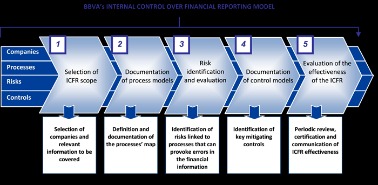Best Bookkeeping Software for Small Business 2023

“Staying compliant with global tax regulations can be a challenge, but NetSuite simplifies this area considerably by ensuring things like calculating and remitting VAT are properly addressed without too much busywork. It also offers strong budgeting functionality to assist with financial planning. All of these features combined make NetSuite a very capable option for businesses of a suitable size. That said, it’s not a trivial investment and implementation does require specialized expertise to configure it optimally for each unique client situation.
Sage Business Cloud Accounting

One of the most straightforward accounting software I have used. I appreciate how it tracks clients/customers, tracks payments, and keeps running calculations of what is due and when. Additionally, many outsourced bookkeeping companies use proprietary in-house software to keep their customers’ books. You can set up Kashoo in 60 or so seconds, and the app immediately starts to categorize your expenses and learn your business spending habits. Like Zoho Books, Kashoo’s automation is its selling point—and unlike Zoho Books, it syncs with SurePayroll, one of our top payroll providers. There are some things that ZipBooks is missing, including a mobile app for Android devices, as well as the aforementioned inventory feature.
Use FreshBooksyour way
They like how easy it is to create invoices and access reporting. However, they say the platform could use more automations and more in-depth reporting. They also wish they did not have to pay extra for features such as adding team members, saving credit card information or processing payroll. Accounting software helps small business owners track their financial accounts, income and expenses, prepare for tax season and keep tabs on financials easily. For many small businesses, software is the more affordable alternative to hiring an accountant, a bookkeeper or a large firm to manage their accounting, tax preparation and payroll processes.
To help you find the best cloud accounting software, Forbes Advisor has compiled a list of the top picks based on pricing, features, support and more. Wave is our favorite free accounting software option for small-business owners. Unlike most paid software, Wave has unlimited user access, including easy access for accountants and bookkeepers. And along with foundational reports like income and cash flow statements, Wave includes sales tax tracking reports. Most notably, its comparative documents help you understand your business’s finances to make wise financial decisions.
The first is cost, as every company needs to find something that fits into its overall budget. When considering cost, look at the monthly subscription fee costs as well as any third-party costs, such as integrations with other software, that may be necessary to have an efficient accounting system. If you’re nervous about setting up accounting software for the first time, Kashoo’s experts can talk you through it. So while Kashoo isn’t as comprehensive as competitors like QuickBooks, Xero, and FreshBooks, its customer service reputation is a definite point in its favor. In spite of its excellent reports and recurring invoices, though, FreshBooks falls short in a few bookkeeping areas. Most notably, its cheapest plan doesn’t include double-entry bookkeeping or free accountant access.
ZipBooks’ iOS app has disappeared from the App Store, and it’s never had a Google Play app worth mentioning. FreshBooks’s combination of stellar features, customizable invoices, and well-reviewed mobile apps make it pretty much perfect—especially for freelancers. Unlike Xero, FreshBooks lets you send an unlimited number of invoices and estimates with every plan. Each plan also includes time tracking for easier, more accurate client billing. FreshBooks’s built-in small-business expense tracking helps you maintain types of bank accounts a balanced budget. And, like QuickBooks Online, FreshBooks includes built-in mileage tracking—a must for freelancers who plan to claim mileage expenses on their year-end tax forms.
Xero: Best for freelance
- Once you sync your bank account and credit cards to your accounting program, the software automatically imports your financial transactions.
- That should make collaboration easier for Xero-using small-business owners who (wisely!) work with financial advisors around tax time.
- Or, if QuickBooks’ high starting price keeps it out of your budget, Xero is our preferred runner-up.
- If you’ve ever waited anxiously for payment from your customers, you know how important it is to get paid quickly.
QuickBooks also has the absolute best mobile accounting app you can find. The app can do basically everything the software can (a rarity for any software provider, no matter the industry). If you work on the go, QuickBooks’s app, which includes mobile mileage tracking, might make it a good fit.
And unlike most other bookkeeping software, Xero includes basic inventory tracking with every plan, which is another reason we love it for product-based freelancers and small businesses. It offers cloud-based solutions, ensuring that businesses have access to their financial data wherever they are. Integrating financial management with inventory, HR, customer management and e-commerce, it consolidates disparate systems into one unified platform. By current liabilities: definition how it works and liability list doing so, businesses can shift their focus from managing multiple software solutions to driving growth and innovation. This cohesive approach ensures that as business complexities arise, NetSuite can adapt, providing a foundation that supports not just accounting needs but a company’s holistic operational demands.
Do I need accounting software for my small business?
I only had to click the “send” button at the top of the page and specify an email recipient to share the report. After creating the project, I wholesale accounting was taken to a page designated to that project. Here, I could post updates on the project’s status, track hours worked and view project invoices, estimates, expenses and profitability reports, all from the project’s page. By clicking “more actions,” then “generate invoice” from the top of the page, I could also easily bill a client. I clicked “edit dashboard” and was given the means to deselect reports I didn’t want to appear on the dashboard.

Leave a Reply